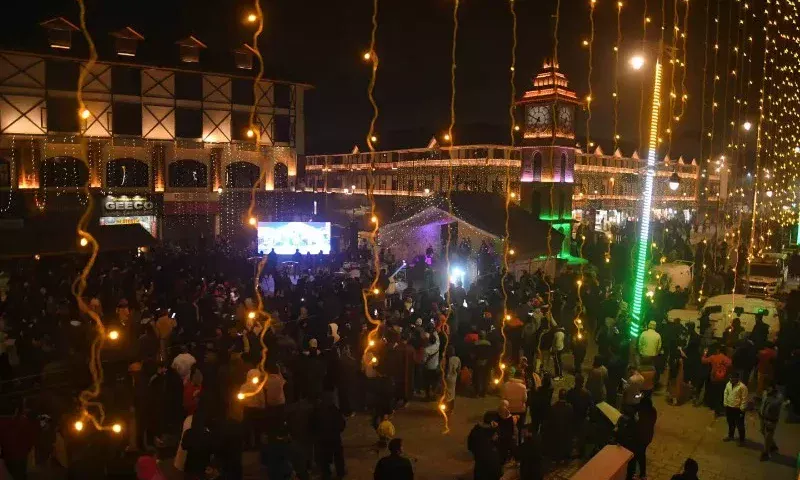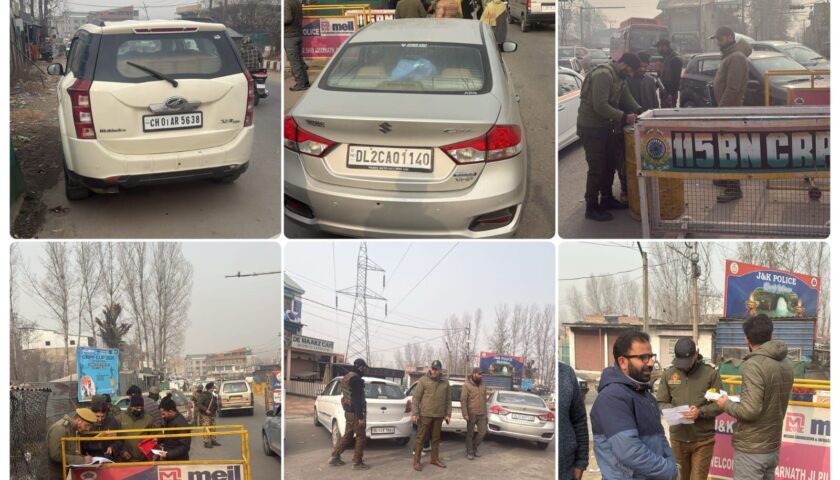There is a major spurt in the cases of drug addiction and substance abuse in Jammu-Kashmir, a region battered by conflict and violence since the 1990s.
According to the latest figures given in the Parliament, the region with a population of 14 million has almost 1 million drug addicts. The consequence of such a massive upswing in drug addiction has taken a heavy toll on a society pounded by conflict and political uncertainty.
At Sopore, 45 kilometers (28 miles) from Kashmir’s capital, Srinagar, anger has overtaken grief after a drug addict’s son strangled his elderly mother to death on March 30. The neighbors, in disbelief, are demanding strict punishment for 32-year-old Showkat Ahmad Ganie for murdering his 70-year-old mother, Ayesha Begum. They say Ganie was involved in drugs for 15 years.
The Sopore incident has sent shockwaves across the region. Militancy and long spells of unrest jolted the Kashmiri society, but such crimes were largely unknown.
“He was into drug addiction for a long time while working as a driver; he only left it briefly but only to resume it later. Last night after returning home from work he strangled his mother,” Ghulam Mohammad, a neighbour who took part in last rites of Ayesha said.
“Lots of youngsters in Kashmir have become drug addicts,” said Razia, who lives in the neighborhood. “We are urging the government to take action against them. The authorities routinely round up drug addicts, but later they are released. Why is it done?”
The Kashmir conflict
Kashmir, with an overwhelming Muslim population, acceded to India at the time of the subcontinent’s partition in 1947 rather than merging with Muslim-dominated Pakistan under a constitutional provision called Article 370 that allowed a semi-autonomous rule in Kashmir.
According to government figures, more than 47,000 people have lost their lives in Kashmir in the fight between militant separatists backed by Pakistan seeking separation from India and the Indian security forces.
Nearly 7 million people live in the Kashmir Valley, 97 percent of them Muslims. After militancy erupted in the early 1990s’ many Kashmiri Hindus fled for their lives and settled outside Kashmir in places like Jammu and Delhi.
On Aug. 5, 2019, in a sudden move, the Indian Parliament revoked Article 370, ending Kashmir’s autonomy. A strict lockdown coupled with a communication blockade was enforced in Kashmir. Hundreds of political workers and leaders were detained. Scores of youths were rounded up and sent to jails outside Kashmir under the Public Safety Act, a draconian law by which anybody in Kashmir can be detained up to two years without a trial.
Kashmir’s drug problem
Riyaz Ahmad (who’s name has been changed), a 25 year old from South Kashmir, has been a chronic heroin user for four years. He said drug addiction is widespread in Kashmir, and addicts like him are ready to beg, borrow or even steal to get their daily dose. His marriage next month is the motivation for him to get rid of drug addiction. But, the withdrawal symptoms are crushing.
“I used to take half a gram to one gram of heroin every day for $19,” he said. “Now I buy one gram of heroin for $75.
“I used to do odd jobs. After being addicted to heroin for two years, I went to a rehab for 10 days. But after giving up addiction for a couple of months, I again turned to my old ways upon meeting my friends. I have now blocked their phone numbers and don’t keep in touch with them. To leave drug addiction you have to necessarily leave the ecosystem that supports it. I had withdrawal symptoms like body pain and shivering. I couldn’t walk and had loose motions and vomiting.”
According to a survey by the Ministry of Social Justice and Empowerment, 108,000 males and 36,000 females were found to be using cannabis in Jammu-Kashmir. Meanwhile, 534,000 males and 8,000 females were using opioids, and 160,000 males and 8,000 females were using various sedatives. A significant number of males and females were also addicted to cocaine, amphetamine-type stimulants and hallucinogens.
“The findings of a survey conducted by the Government Medical College Srinagar in 10 districts indicated that more than 600,000 people used substances of abuse” said Dr. Abdul Majid, a Kashmir-based psychiatrist. “But an estimate of 1 million drug addicts can be true, and unfortunately, those numbers could be more.
“As per estimates, we have overtaken the Indian state of Punjab, which has 1.5% opioid prevalence, while Jammu and Kashmir has 2% opioid prevalence. Obviously this is a worrying trend because we have a young age group. The largest number of youngsters anywhere in the world live in India, and the same holds true of Jammu and Kashmir which has a significantly high percentage of young population.”
Reasons driving the youth of Kashmir toward drug addiction are many, but the easy availability of substances tops the list.
Hardly a day passes when police don’t put out details of drug peddlers and narcotic substances recovered from them.
Conflict taking toll on mental health
A general sense of hopelessness in Kashmir has pushed a big chunk of the youth toward drug addiction. Thousands have been killed in Kashmir since militancy erupted in the early 1990s. Scores of protestors also died in police firings during the cycles of unrest in 2008, 2009, 2010 and 2016.
The protracted conflict in Kashmir has taken a huge toll on the mental health of the people, with health experts calling Kashmiris a traumatized population.
The number of patients showing signs of depression and anxiety in Kashmir has increased drastically. Doctors say the capability to cope with trauma varies from individual to individual. Those who are traumatized for the first time are in a better position to cope with it, but the coping mechanism gets weakened for those subjected to a series of traumatic experiences.
Farooq Ahmad (who’s name has been changed). 27. was a chronic stone pelter during 2018, when stone pelting and street protests were the order of the day in Kashmir.
The same year he was addicted to heroin. He used all his savings to buy drugs. He sold his two cars and borrowed money from friends and family. But when nothing was left, he snatched a gold chain from his mother to buy drugs. In 2019, he left Kashmir for Haryana, where he worked for two years. This helped him to escape violence in Kashmir and kept him away from drugs.
But his past returned to haunt him upon his return to Kashmir in 2020, when a case under Public Safety Act was slapped on him for his previous cases of stone pelting on police. He was jailed for one year. After his release, a strong urge caused him to return to drug addiction.
“My journey into drug addiction began with heroin injections,” he said.
It is easy to get heroin in Kashmir. Some police personnel after recovering drugs and narcotic substances show only partial recoveries, and the rest of it is again available for use.”
He said he used his father’s good reputation to borrow money from relatives and friends, and nobody suspected that he was taking money for drugs.
“After they found out why I was taking money, they stopped giving money to me, and a time came when nothing was left — I was left with no other option but to steal,” he said. “I spent all my money on drugs. I sold my land and two cars; then I took out a bank loan. When no money was left, I snatched a gold chain from my mother.
“My family was very upset when they got to know about my drug addiction. They were initially suspicious when I suffered from sleeplessness and a loss of appetite besides a strong craving for sugary things. But I used to swear that I was (not) into drugs until my life got ruined.”




